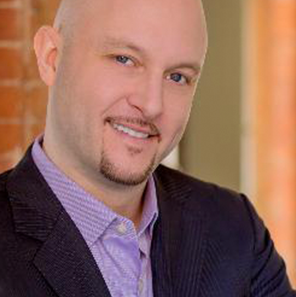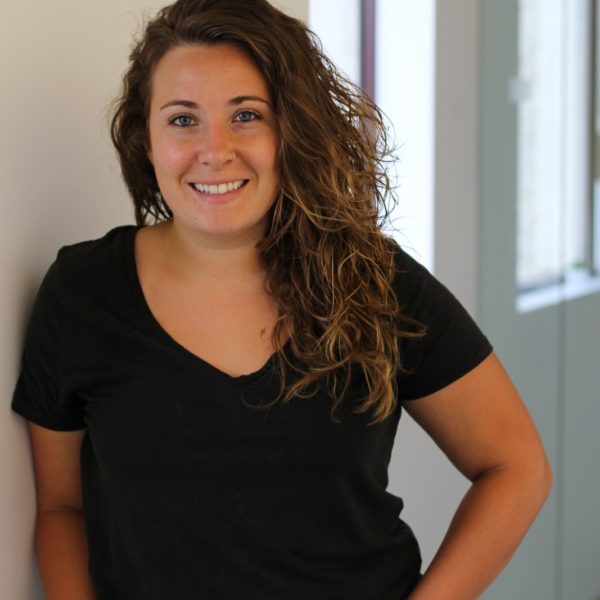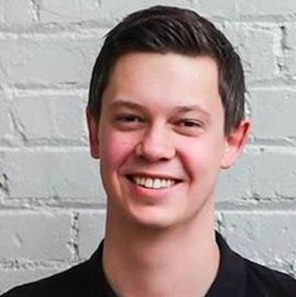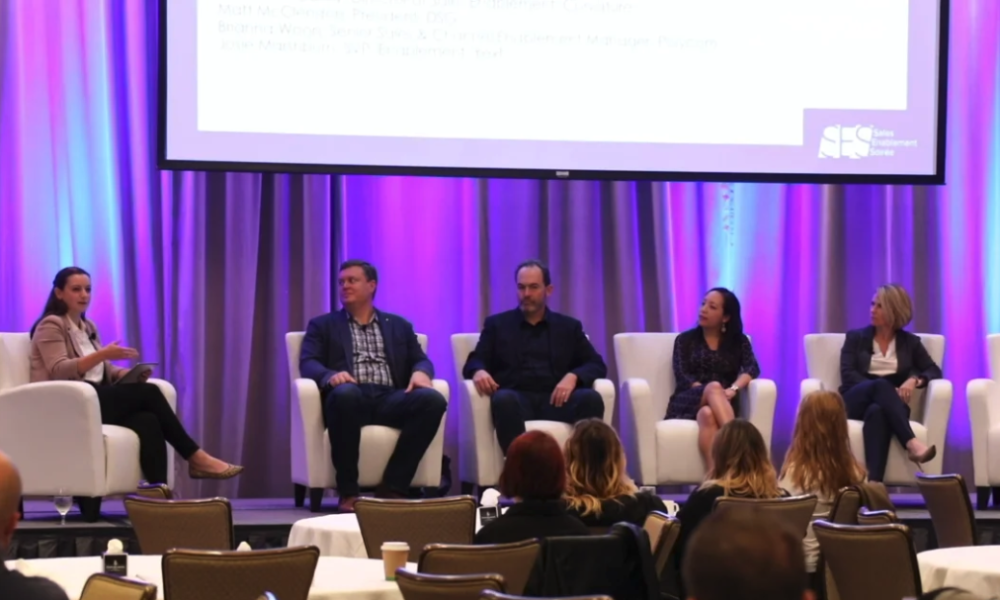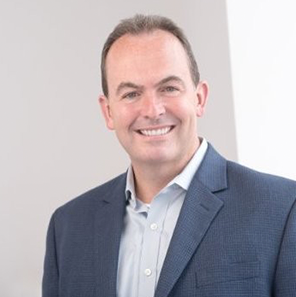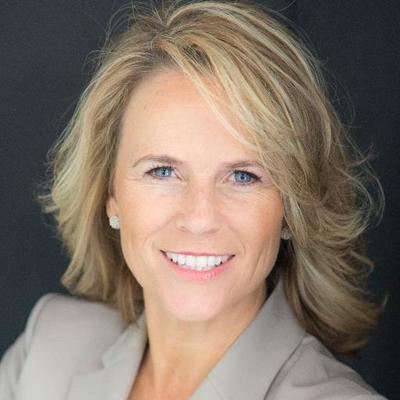Episode 116: Alyssa Clark on Enhancing Learning with Design Thinking
3.1K Views | 24 Min Read
Shawnna Sumaoang: Hi, and welcome to the Sales Enablement PRO podcast. I am Shawnna Sumaoang. Sales enablement is a constantly evolving space and we’re here to help professionals stay up to date on the latest trends and best practices so that they can be more effective in their jobs. Today, I’m excited to have Alyssa Clark, the head of curriculum and instructional design for sales enablement from ServiceNow join us. Alyssa, I would love for you to introduce yourself, your role, and your organization to our audience.
Alyssa Clark: Thank you so much, Shawnna, and shout out to you and Olivia for putting this together. I’m just really a fan of the curriculum and curation that you guys do on the site. I’m such a fan, so happy to be here. As you mentioned, my name is Alyssa Clark. I have a fancy title, but essentially, I am responsible for the “what” and the “why”, as it pertains to the curriculum that my learners at ServiceNow consume. So, I call myself a nerd about all things place learning. I’m based in San Diego, California, and I’ve been with ServiceNow, now going on six months. So, it’s been quite a fun journey, we call it a spaceship. Joining ServiceNow is like going above and beyond anything you’ve known before. So, it’s been quite a fast and furious ride, but it’s the right place for me, absolutely.
A little bit about me, it’s my least favorite topic, but I will say that I am like many people who have joined your podcast, not actually a traditional, workplace learning person. I’m actually a paused academic. I entered into the corporate learning space back in graduate school after being awarded an opportunity to teach as the instructor of record for San Diego State University, and really fell in love with the knowledge transfer process and wanted to be more involved, I suppose, in creating those experiences for people to get immediate gratification. That probably says something about me, but we’ll get to that later. So, it really has been a 10-year romance, if you will, with corporate learning. I’ve been through healthcare engineering nonprofits, and now most recently into technology, which is truly where I feel like I belong. So, I finally feel like I’m home at ServiceNow.
SS: I love that. Now, Alyssa, you and I have had a chance to talk a little bit about how you think about learning and you had mentioned that, you know, one of your areas of expertise is really in design thinking. So how do you incorporate design thinking into the training curriculums that you create?
AC: Yeah, thanks for bringing that up Shawnna. So, design thinking is not something you normally hear associated with instructional design or corporate learning. It’s a functionality and a philosophy that’s more commonly used in UX design. So, for applications, websites, products, and I’ve thought about for a long time why it is that learning teams don’t see their outputs as products. And that was something I was scratching my head as I still filtered through, you know, the Addie model, the Sam model, Gagne, Bloom’s taxonomy. They all seemed to be participating in, but not truly aligning with empathizing with our end-users needs. So, a long-winded way of saying that I really see learning as a human-based brain pattern thinking approach that we need to lean into fully and understand. So that’s really where bringing in a model that works so well for some of the apps and products that we all use on a daily basis into corporate learning really made sense to me. And it’s been interesting as I tried to bring this approach to various companies it’s seen as disruptive, it’s a bit provocative. It’s not quite understood in terms of the way we should create content, let alone create performance solutions.
But what it is at its core is really a way to help people from their reasoning skills, to their categories, sizing skills, really think about innovation in a different way. And I think at its core where we need to arrive at as a discipline is really making sure when we’re designing a piece of content as a learning professional, is that the right solution, right? Is content king? I would probably argue that not anymore. I think content is context. And again, by using design thinking, what we’re able to do is shift the approach from quantity and high consumption of collateral to truly what is the right solution to support the performance outcome. So, absolutely sometimes the answer is content and through design thinking, we’re able to arrive at that and truly have a higher lift content experience for the learner.
But at the same time, I think what we miss there is an opportunity to really say, “Okay, we were thinking within these constraints, stakeholder expectations, what product marketing wants, but are those assumptions really the right things to be inputs in our design,” and design thinking is a cornerstone of saying let’s challenge those assumptions. Right? A lot of the time you hear it talked about as out of the box thinking, but the contrarian in me would actually say maybe that box wasn’t the right thing to be thinking within in the first place. Design thinking gives us a process as an instructional design team to unpack those assumptions and deliver a better-quality product.
SS: I love that. And I think in order to be innovative, you do need to be disruptive. So, I love what you’re doing with your perspective on this. Now you mentioned, kind of the human centricity of it. So how can you tailor curriculums to your learners? What’s the impact of kind of a more human-centered design on the effectiveness of learning programs?
AC: Yeah. Great question. So, I think what we need to understand in that question is what is human-centered design truly? And it is empathizing with the human being, that learner, that consumer before anything. So, it’s really thinking about how does the learner want the information? When in the daily flow of work are, they experiencing the need for that information? And then also, how are we as the learning professionals, the architects designing that experience, taking those inputs into consideration and the product? I know everyone is familiar with going to Chipotle right. You go to Chipotle you walk through the line and all the ingredients are the same. Everything from a requirement standpoint is standardized and that experience, but what’s unique about it is our dietary preferences, religious backgrounds, right? Dietary constraints and all of those things need to be considered and tailored to in the experience of building your bowl or your salad or your burrito. A burrito sounds good.
So, in that process, my team would say that that’s actually a great use case to unpack design thinking, right? Some of the requirements that I mentioned. What’s the right output for that person based on, again, all of those requirements that we gathered and really thinking about that, as it comes to our curriculum standpoint, we want our content to be just as yummy as Chipotle. We want to be able to give people the opportunity to customize, tailor, curate, and own, right. They have that accountability to their learning experiences. And the only way that you do that is by truly making sure at the front end of your process, that you have important and intentional research-based conversations with your end-users. So, in terms of my team, we have a commitment to incorporating and conducting focus groups, interviews, survey questions, to truly make sure we understand the persona that we then therefore designed to and deliver to. That is really the recipe for success that we found this far in our short tenure together that’s already bred quite a few results.
SS: That’s fantastic. And that’s also what we get for doing this podcast around the lunchtime hour because now I am also wanting a burrito. That was fantastic. I want to talk a little bit about making sure that you’re able to maintain attention. I think that’s one of the challenges that we’re seeing across the board right now in this particular space given the world that we live in right now, in 2020. So how do you make learning experiences engaging for your sales reps? What are some of the strategies that you’ve used to be able to really grab and maintain their attention?
AC: Yeah, absolutely. This is something that keeps me up at night, right? This is something that every day that goes on every new channel of media that’s introduced, every new consumption or technique or modality that content is now released in, whether it be Quibi or Netflix, those are all things that I get inspired by. And I think about how are we focused so much as an industry, as an L&D sales enablement industry on getting consumption, getting people to want to sit down and take our training. How is it that we’re so focused on that as a discipline when we all know that we’re all consuming content constantly. In a meeting, we’re scrolling on Instagram. We have LinkedIn open, you know, on our browser page. And I’m constantly thinking about why is it that we’re so focused and we have to be focused on getting people to consume our stuff and this question highlights it, right? It’s not interesting. We’re not creating content and we’re not creating a buzz and a want and a need and an organic curiosity to go and want to pursue that knowledge.
And I think that’s where this need for a complete overhaul and a disruption and a Renaissance of this industry is starting to take off. And people like Bob Mosher, Elliot Maisy who are challenging, letting content be King, and really focusing us on performance support and moving towards a model where we’re not only thinking about what’s best for the learner, but we’re actually able to say that they’re able to know something, do something and be better for it without a learning professional telling them to go do it. So, I think one of the ways that today my team is doing that really well is we really see ourselves in these design thinking sessions. We get a requirement from the business. We get a training ask and our first step in our fulfillment models to bring that to a design thinking session.
I am so grateful to be in partnership with one of the best development leads that I’ve seen in the industry. His name is Roger Jennings. He’s our head of e-learning and digital media development. We go into one of those design thinking sessions and it feels like you’re in Disneyland, right? We are talking about the art of the possible, we are thinking about what could be done and not what we could do. That is the art of design thinking, Shawnna, is being able to come into a room, know you have technology assumptions, know that you have stakeholder expectations, know that you need to get something out on usually a pretty robust timeline, but we are saying as a team, we put our feet in the sand and we will hold here because this warrants true design. As we go through one of those sessions, what ends up coming out of it as an output is something like having an embedded real-life example from a customer conversation where it’s actually broken down in plain language.
A lot of the times we talk to ourselves in our content. We love the sound of our own voices, my team often hears me say, and we need to make sure we’re not coming at subjects as academics, as technical experts. We’re having conversations as they sound in the flow of work, in the daily communication with the customer. I think tying it to those stories, tying it to the real-life experiences is where that magic happens. And I’m saying not the positive stories, right? A lot of time, my team to make things truly engaging our favorite pieces of content and from our field perspective are the tough conversations. The stories of when things did not go well, and we make it really a create your own adventure type story.
So, a lot of scenarios, a lot of unpacking, a lot of decision-based scenarios where you progress through the content based on previous assumptions or previous answers. And I think that’s where the magic is where you really empower that learner to see your e-learning, your VILT program, whatever your actual output is as an enablement team, that product is more important in terms of your experience and how your people feel going through it rather than simply checking for completion at the end. I know I hit on a lot there, Shawnna, but I think it’s important as we think about, it’s not just about making the e-learning cool or have a cool graphic or have a high-level senior person speaking. It’s more about at the end of the day, when they finish and hit that final button in your e-learning, how are they going to feel and what are they going to remember?
SS: I love that. And I love the passion that you drive into that. And one of the other things that you had mentioned was the importance of persona-driven enablement. So, how do you leverage that to kind of guide your sales enablement strategy?
AC: Yeah, back to our core tenants being rooted in design thinking UX, right, user experience research. We have a comprehensive customer as well as internal persona documentation that my team is quite intimate with and leverages quite often in terms of using that as a core input in our decision making. So, research and live upkeep of those personas is critical. I know a lot of people are getting used to seeing customer personas, being used as inputs to e-learnings. We use them in scenario decisions and things like that. But I think what also happens is we use them internally, our sales rep, our solutions consulting, rep our customer outcomes, rep all of those look and feel different and we try to get to know each of them, like we were speed dating, right. And understand what makes them tick, what are their motivations? What’s the why behind the what for them, in terms of why they show up to work and do this job, this particular job every day. And those insights have actually led to some of our most powerful design choices as it pertains to cultures, whether we’re an APJ, we’re here in the Americas. By knowing intimately who that person is behind the screen, whether it’s their phone or their computer, who’s engaging with my team via our content. I think it’s important for our team to know who they are, just as much as it’s important for them to know who we are. And that’s a commitment that I’m so proud of my team.
I have some of the best agile, critically-thinking, problem solving, completely inspiring people who work with me and for me, and at the end of the day we think about as a team, our content that goes out as an extension of us and not just us as a professional service provided to the business, but as human beings. My team is just as much empowered and actually expected to be individuals to think curiously, to have independent thought, to question me, to question everyone. And from those questions, that’s really the secret sauce that leads to thoughtful design, thoughtful execution. And at the end of the day, an actual memorable experience for our learner who thinks about not just what they consumed, but the why behind it.
SS: I love that. And it sounds like you have an amazing team working with you there. So, I want to kind of take some of these concepts that you’ve now talked about and ground them in something that I know that you’ve recently been working on. You mentioned that you had recently refreshed your product foundations curriculum. So, what was that process like and what has been the outcome of launching that new curriculum?
AC: Yeah, it’s definitely something that I could not be more proud of and happy to kind of take you through that journey. So, our product foundations curriculum is our initial set of courseware that a new ServiceNow employee, eventually going to be a customer-facing rep, having customer conversations, experiences to have their first date with our product. And as I came on board, it was something I experienced myself as a new hire. And I got to thinking, you know, this doesn’t feel quite like ServiceNow to me. ServiceNow is the digital transformer. We are out there helping companies be stronger, better, more agile than ever before. And how does a 60-minute course, how is that going to achieve the outcome we’re looking for? If we can’t keep the interest of our learner so quickly, my team and I were tasked with thinking about one, 18 products. How do we get net new courseware for each of those that’s customized per persona? It’s quite a quantity when you start doing that math problem and thinking about how do we still put our feet in the sand?
And again, say we are not going to just package up a voiceover PowerPoint and get it to the field. We refuse, right? How are we going to protect that integrity and make sure design gets baked into this? So, we quickly empowered our design thinking process. We brought the requirements in for early kind of reading in the project team on the design challenge and framing that design challenge for the team. Here are the products. Here are the requirements. Here’s the non-negotiable stakeholder expectations that we know of. Here’s the modality. Here’s some of the personas we know of. What can we do, team? And so after about a two and a half week process, Roger Jennings, my former peer I mentioned, and I were looking at our team of instructional designers, any learning developers, and what we were looking at was a prototype that the team had actually curated for us in terms of not only organic build of the net-new courseware, but actually examples of stories and the storytelling that we would then bring to the product. We were actually able to still do this with the team’s idea of a microlearning approach, where we start to actually be able to stack courseware per behavior and per skill in a proctored way. Meaning the enablement professionals suggesting a model in which they consume, but also in a self-curated model where the rep in the flow of work in the moment of need can experience a micromodule on a particular product.
When they need it tied closely with our CRM, where they’re actually doing the work, conducting, closing the deal, attaching the ACV, whatever it may be. That is the moment where the beauty of design thinking happened, where we were able to bring this learning, bring this well-designed experience, courseware and collateral. We did bring content in, absolutely we did. And all of that went into the actual sales motion. The actual moment of need that new ServiceNow employee has the full support of those 18 products in the moment, when they need them. And truly, I can say that being able to trim from a 60 minute times 18, again, I’ll let you do the math down to our longest courses now, 10 minutes, we really modeled the four-door approach and letting them be a playground there’s opportunity to listen, we catered to all of the learning preferences and now able to have a freestanding set of courseware that can be self-curated, like I mentioned, as well as enablement proctored as needed for that particular individual.
So that overhauled not only spoke to my team’s ability to come in, new leader, six months here, learn my new process, learn my new way of thinking, question me, get to know me, ask the right hard questions. Why are we doing this? What is this meant to serve? Buy- in, norm, produce an output, and now launch that output. And the stakeholder feedback has been, this is the kind of disruption that’s welcome at ServiceNow. These are the right types of innovation to get us where we need to go. My people are more excited when they hear enablement more than ever before. That’s the kind of stuff that makes me sit here and think. Organic thought is the right move. Inspiring curiosity is the right move and trusting humans to experience and make the right decision and the right moment can totally be achieved if you empathize with their needs and bring design thinking to do what it was going to do and truly deliver a human-centered product.
SS: Sounds like a truly beautifully designed curriculum. Thank you so much, Alyssa, for this conversation, I have enjoyed every minute of it.
AC: Shawnna you are a rock star. I am such a fan of you and of the channel, and just really appreciate you leading in on some of these topics. And I really appreciate you inviting my perspective. So, the pleasure was all mine.
SS: Thank you so much. To our audience, thanks for listening. For more insights, tips, and expertise from sales enablement leaders visit salesenablement.pro. If there’s something you’d like to share or a topic that you’d like to learn more about, please let us know. We’d love to hear from you.







